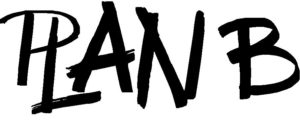“Huh?”
There are days we’d swear one of our dogs (it differs by the day) is an idiot who never learned anything, ever. You know those times – you start a high-energy, 2-Minute session and they stare at you blankly when you say “Sit!” or “Down!” or “Come!”
When it happens, and it happens to everybody on occasion, the best thing to do is just shift gears and try something else. Don’t abandon the session! Just go to “Plan B!”

Choose a different training game – or no training at all! There’s no timeline and no repercussions for not fulfilling one day’s plan. You’re certainly allowed, even encouraged, to just grab a toy and play “tug” or “fetch” with your dog.
What does your dog want to do?
On the other hand, if you think your dog is just “testing” you – try something else to engage him or her. Start with tug and turn it into a “hand touch!” Sometimes your dog can lead the session and let you know what he wants to do.
Hope’s Frenchie Torque’s favorite training game is “tap,” where he alternates paws touching Hope’s foot. There are sessions where he runs up to her and “taps” without prompting. And some days, he gets to choose! Other times he’ll get his “tap” at the end of the 2-Minute session – if he plays the game Hope wants, first!
Delayed learning does work
There are times when your dog just doesn’t seem to be “getting” what you’re teaching at all. If your dog usually learns something in about three to five sessions, and it’s just not coming, put it away for a week or so. Then try again. You might be amazed that the behavior you thought was never going to happen has almost been perfected by letting it lie dormant for a time.
Your dog is unique, and so is his learning
It will take a while before you know your unique dog’s learning pattern. What games she enjoys, which kinds of behaviors she finds easiest and which are most difficult. You may recognize similarities if you keep track on the worksheets available for download for each of the courses. The worksheets are a training tool that comes in handy.
Your dog can pick up on your energy
Dogs will also pick up on your preferences for training, too. Your energy level may be different for “place” than it is for “come.” If you take video of your training – watch yourself the first time through. Then watch it again, noting how your dog reacts to you. If your tone or energy changes – so does your dog!






